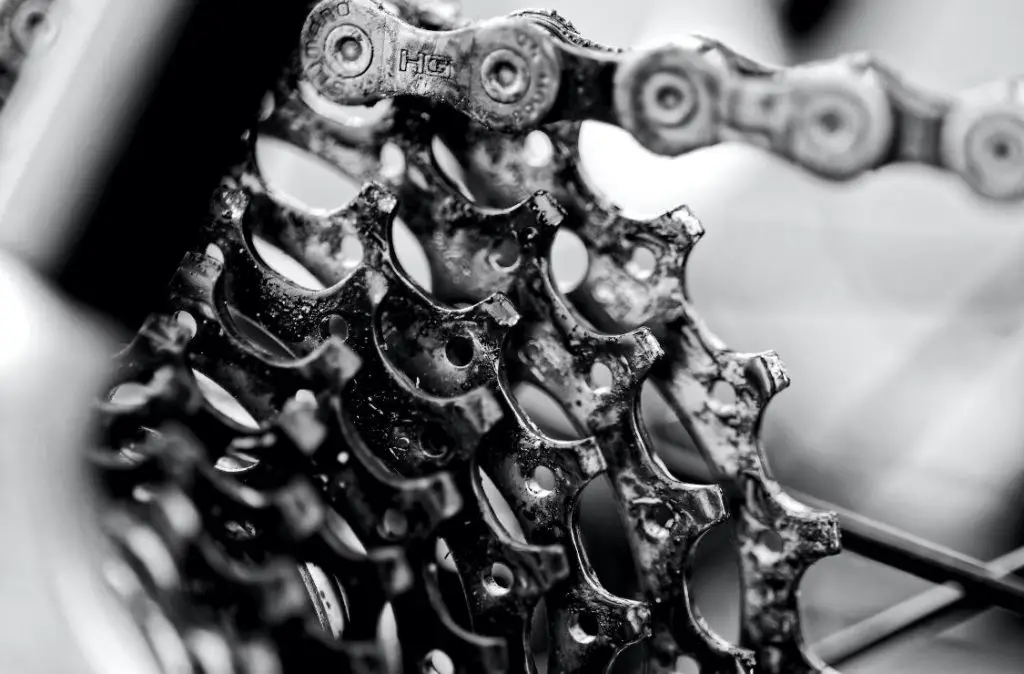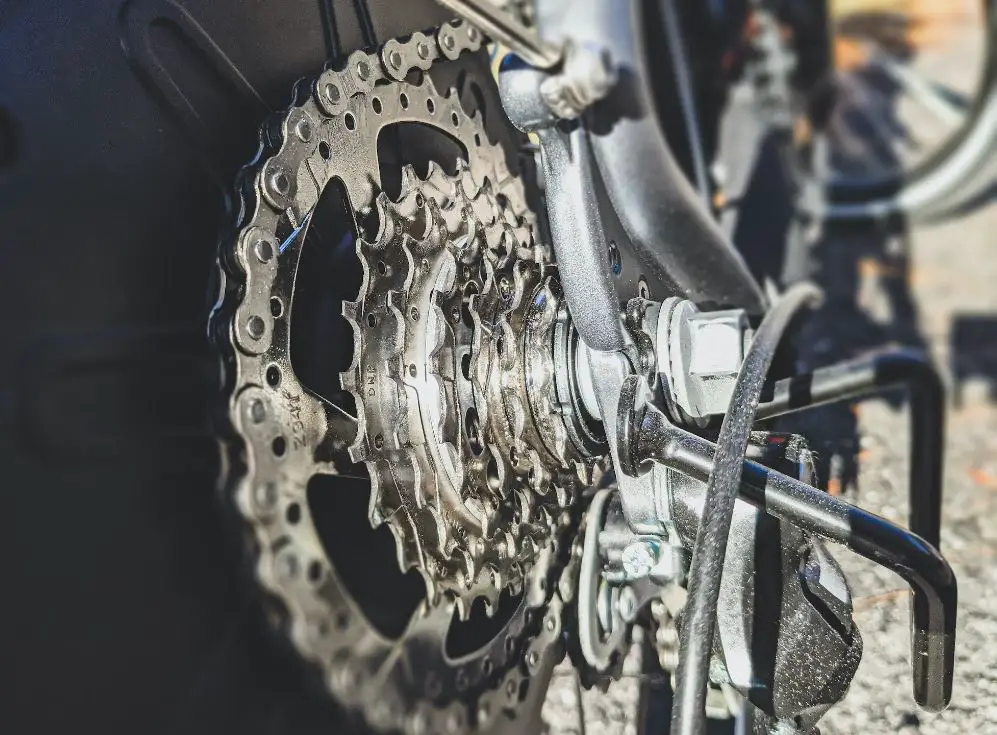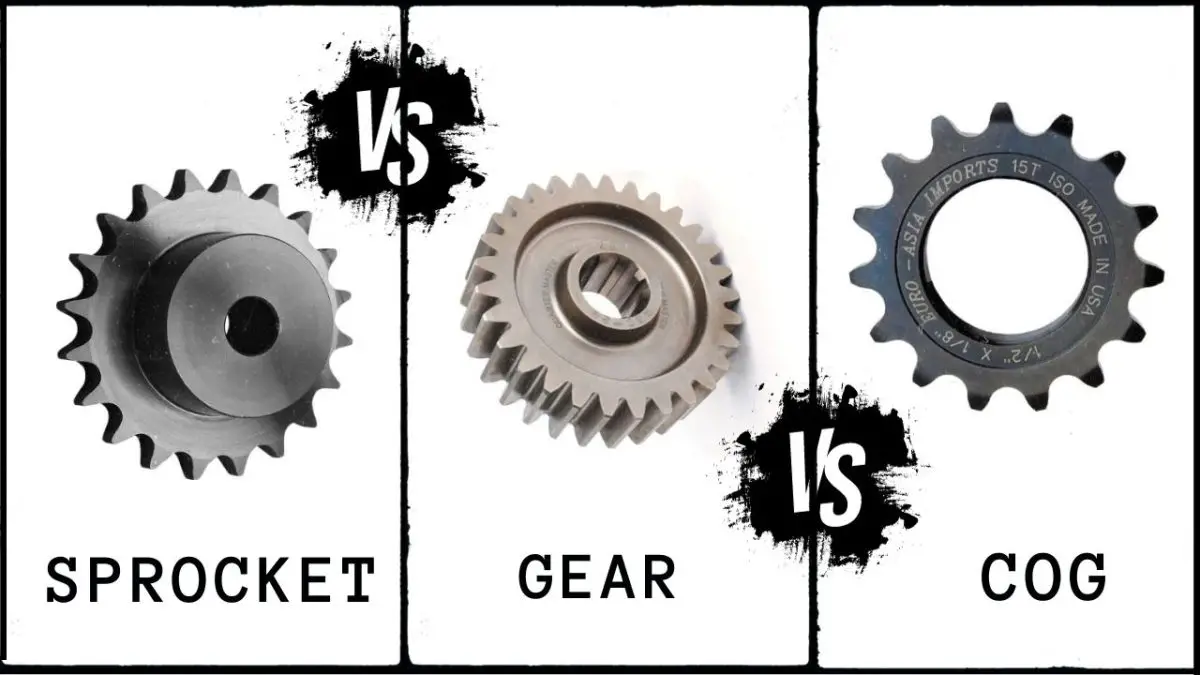Sprockets, gears, and cogs are all components of your bike’s drivetrain, which is responsible for transferring power from the pedals to the wheels.
But bicycle terminology can be confusing – what exactly is the difference between sprockets, gears, and cogs?
Are they distinct components or can the terms be used interchangeably?
In this article, I’ll give you an in-depth explanation of what sets sprockets, gears, and cogs apart, and how they interact in a bicycles drivetrain.
Quick Summary
- Sprockets are toothed wheels that mesh with a chain or belt to transmit power.
- Gears are toothed wheels that mesh with other gears to transmit power.
- Cogs are tooths on the rear cassette.
Sprockets – Wheels With Teeth For Chains
A sprocket is a type of wheel specifically designed to mesh with a chain.
Also Read: Can I Use 3 In 1 Oil For Bike Chain?

Sprockets have teeth around their circumference that engage the links of the chain. This allows rotational force and torque to be transmitted from one sprocket to another through the chain.
The large front sprocket that the pedal attaches to is called the chainring or front ring.
The rider pushes this sprocket with their legs, setting the chain in motion. The chain then drives the rear sprockets on the back wheel called the rear cassette or cluster.
Multiple rear sprockets of different sizes provide different gear ratios.
The key attribute of a sprocket is that it is designed to mesh with and drive a chain.
The teeth profiles are shaped to engage chain links efficiently while minimizing noise and wear.
The front chainrings and rear cassette sprockets are both examples of sprockets working together on a bicycle.
Gears – Meshing Wheels That Connect Shafts
Gears are wheels that have teeth around their circumference similar to sprockets.
But gears are primarily designed to mesh with other gears rather than chains. Their purpose is to transmit rotation and torque between two shafts.

For example, on an internal gear hub, sets of gears provide different gear ratios within the rear hub shell.
Planetary gear systems also use multiple gears rather than chains and sprockets to achieve substantial gear ratio reductions.
Also Read: Common 1up USA Bike Rack Problems
On a traditional external drivetrain bike, the gear wheels that make up the front crankset and rear cassette are more precisely referred to as sprockets rather than gears since they drive chains rather than shafts.
But you will sometimes see the terms used interchangeably.
Cogs – Smaller Gear Wheels
Cogs are gear wheels similar to gears, just generally smaller in size.
On a bike, the rear sprockets are sometimes referred to as cogs instead, though technically they are sprockets since they drive the chain.
Cogs tend to imply smaller gear wheels used in transmission systems rather than directly driving wheels or other components requiring high levels of torque.
The small gears in a front derailleur mechanism may also be called cogs.
Again, terminology can be confusing since cogs and gears essentially describe the same thing – rotary gear wheels.
The difference is often just a matter of size and application.
Putting it All Together – The Bike Drivetrain
Now that we’ve defined sprockets, gears, and cogs, let’s look at how they come together in a bicycle drivetrain:
- The front crankset consists of chainrings (sprockets) mounted to the crank arms. The rider pedals to turn these sprockets.
- The chain wraps around the front chainring, transmitting pedal power rearwards.
- The rear cassette is a set of sprockets of varying sizes. The derailleur moves the chain side to side between the sprockets to change gears.
- Shifting to a larger rear sprocket results in a lower gear ratio, easier to pedal but slower. Shifting to a smaller rear sprocket gives a higher gear ratio, harder to pedal but faster.
- Multiplication of the front chainring size and rear sprocket size gives the overall gear ratio.
So remember that the gear wheels on both the crankset and rear cassette are technically sprockets since they drive the chain.
Also Read: Chain Skipping Under Load

The mechanics inside the hub gear or derailleur are more precisely gears since they transfer rotation between shafts.
Again, you’ll often see the terms used interchangeably.
Bottom Line
Understanding the differences between sprockets, gears, and cogs is important when it comes to maintaining and upgrading your bike’s drivetrain.
By knowing what you have and how they work together, you can make informed decisions about which parts to replace or upgrade.
FAQs
Are Cogs And Gears The Same Thing On A Bicycle?
Technically, cogs and gears are not the same thing on a bicycle.
Cogs refer specifically to the individual teeth on a sprocket or gear, while gears refer to the entire system of sprockets and gears that provide multiple gear options for your bike.
However, the terms are often used interchangeably in casual conversation.

